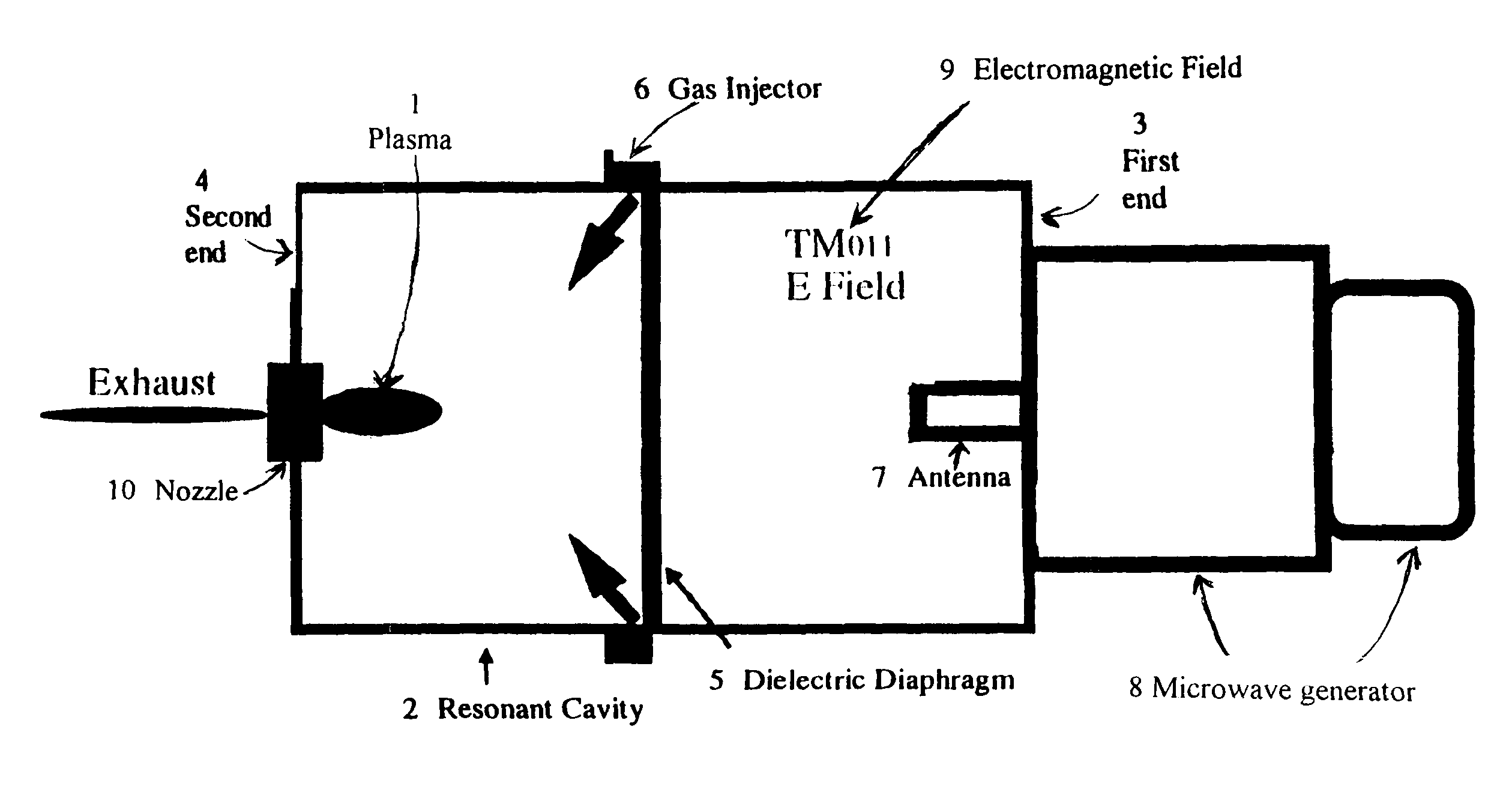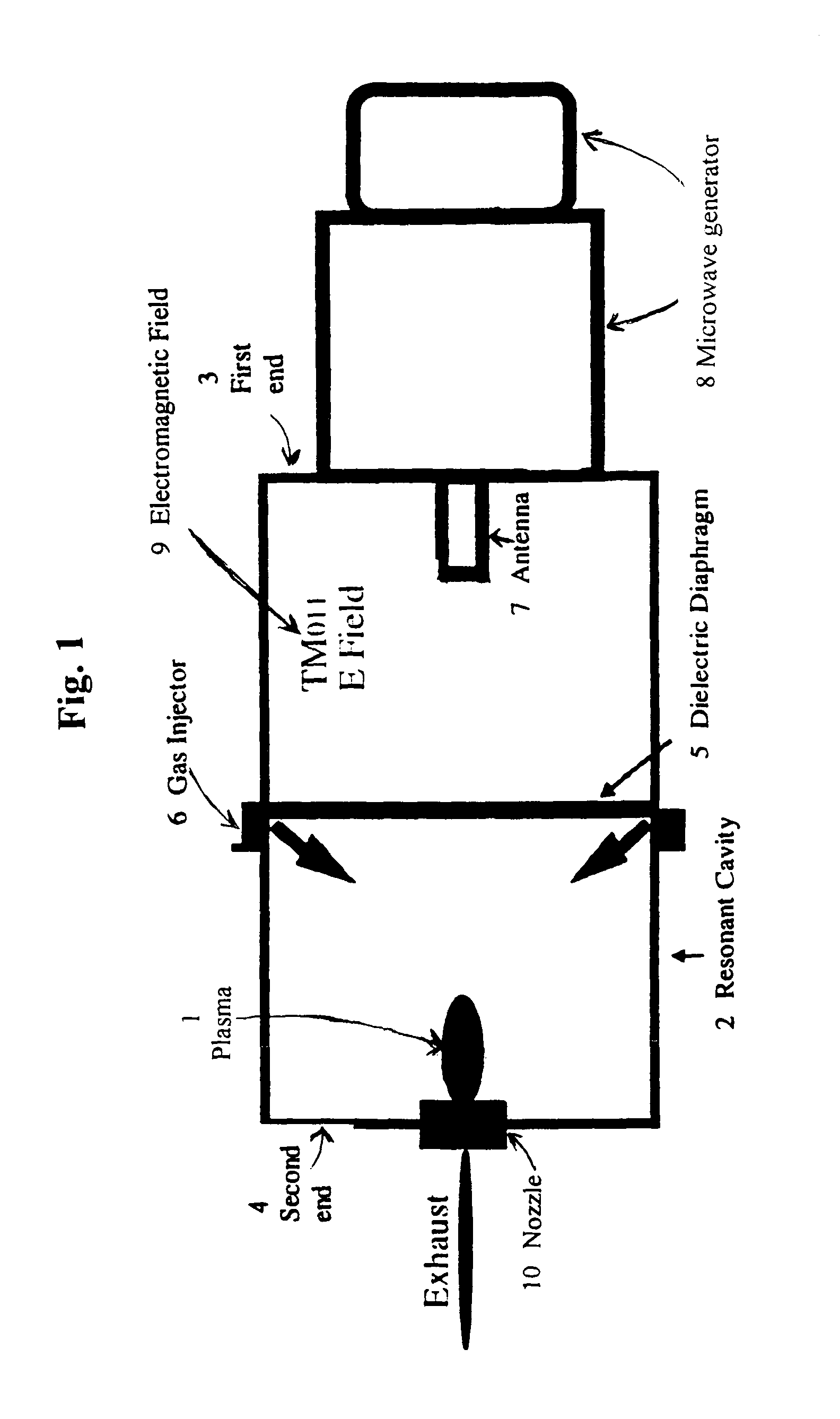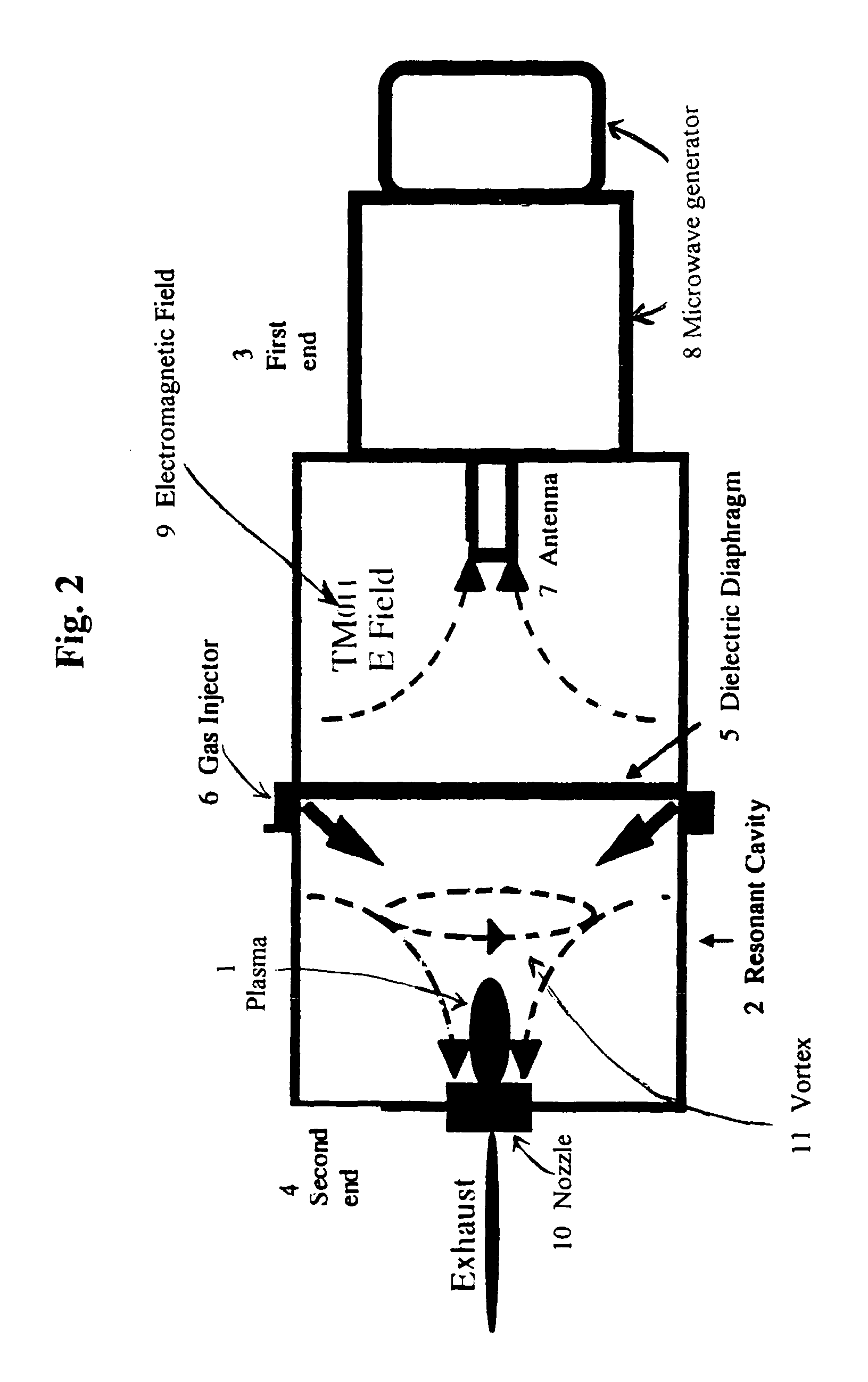Plasma reactor for cracking ammonia and hydrogen-rich gases to hydrogen
a technology of ammonia and hydrogen gas, applied in the field of hydrogen generation, can solve the problems of high heat loss, prohibitive use of ammonia as a fuel, and large heat loss
- Summary
- Abstract
- Description
- Claims
- Application Information
AI Technical Summary
Benefits of technology
Problems solved by technology
Method used
Image
Examples
example 1
[0026]In its ultimate development, assuming sources of energy inefficiency and unnecessary gas heating are eliminated, the plasma cracker processes, in the case of ammonia, approximately one (1) liter per second of ammonia gas is fed into the reaction chamber and consumes two kilowatts (2 kW) of power to perform this processing. The hydrogen gas exhausts into a low pressure chamber to cool it for use in a fuel cell or storage for later use. The chemically free hydrogen, is released at a rate of 1.5 liters a second, and can be combusted in a fuel cell to produce power at high efficiency (80% assumed) and release, in turn, 12 kilowatts of power. Thus, 12 kW of power can be released by an investment of 2 kW. This is an energy multiplication factor of six (6).
[0027]In early versions of our experiment with lower energy multiplication factors, the plasma cracker is used to facilitate the storage of hydrogen in the form of ammonia with hydrogen being made “just in time” for use as rocket f...
example 2
[0028]For the case of natural gas or methane, the rate of gas processing at one (1) liter per second, requires approximately 3 kilowatts (3 kW), due to the higher binding energy of methane but will produce approximately 16 kW of electrical power when processed in a high efficiency fuel cell. The process of plasma cracking can produce a factor of energy multiplication of approximately 6 times, assuming energy efficiencies of 80% in fuel cells.
[0029]Inefficient processes in the plasma cracker can result in lower gas processing rates for the gas at fixed powers and yield lower energy multiplication factors.
[0030]Although the preferred embodiment describes using ammonia as the injected gas, other types of hydrogen-containing gases can be used, for example, natural gas and water vapor. Natural gas can be delivered to the reaction chamber via pipelines that are well established in many parts of the world. Argon, helium, nitrogen, and combinations thereof, can also be used as a non-reactiv...
PUM
 Login to View More
Login to View More Abstract
Description
Claims
Application Information
 Login to View More
Login to View More - R&D
- Intellectual Property
- Life Sciences
- Materials
- Tech Scout
- Unparalleled Data Quality
- Higher Quality Content
- 60% Fewer Hallucinations
Browse by: Latest US Patents, China's latest patents, Technical Efficacy Thesaurus, Application Domain, Technology Topic, Popular Technical Reports.
© 2025 PatSnap. All rights reserved.Legal|Privacy policy|Modern Slavery Act Transparency Statement|Sitemap|About US| Contact US: help@patsnap.com



